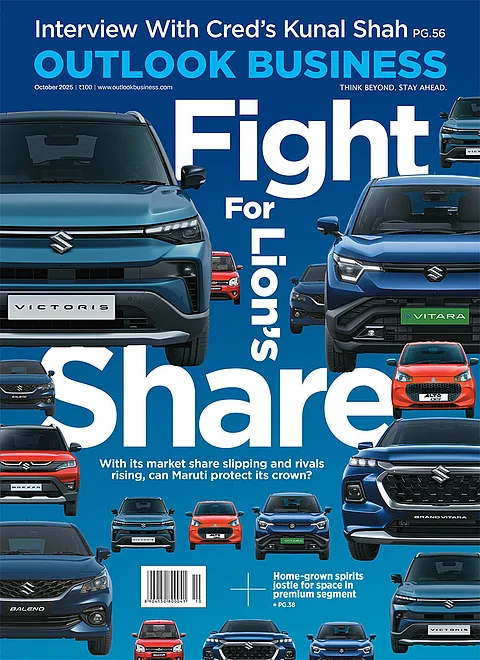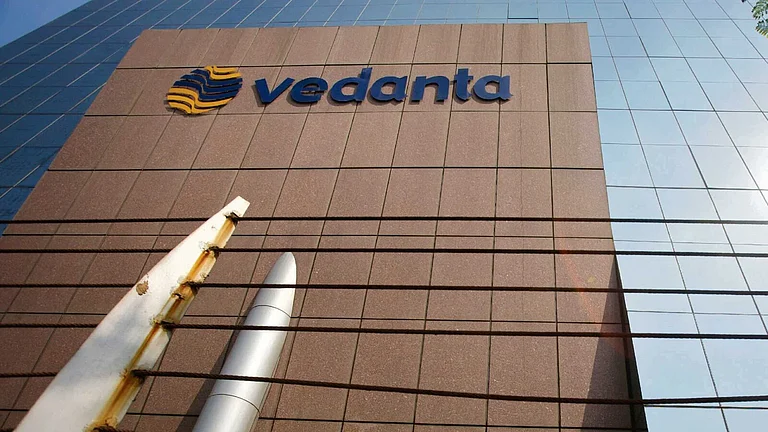Sidharth Singh had his eureka moment in 2014. Just like some of the founders of the biggest companies today, he was struck with the idea in college, working on a cup-branding project for an assignment. The idea seemed ingenious. For most of us Indians, our day doesn’t start without a hot cup of chai or coffee. Even a workday is incomplete without a trip to the nearby tapri and sipping away our misery. Chai and coffee are everywhere, so why not monetise the cups they are served in?
That’s how Singh started out. Now, his start-up, named CupShup after our love to gossip over a warm cuppa, will hit revenue of Rs.120 million in FY20. In less than five years, the start-up has worked in 30 cities for over 160 brands, and has run several campaigns for top start-ups and corporates, including 25 for Ola, five for Kotak Mahindra Bank and 15 for Swiggy. Raise that paper cup for a toast!
But, as those prissy bookmarks say, nothing has come easy. The first trouble Singh faced was during that college assignment. A paper cup manufacturing company informed him that the minimum order quantity was 100,000 cups for a buck each, but his requirement was only 100 cups. Singh had no alternative but to design the cups using stickers and distribute them at nearby tea stalls. He gathered feedback from customers, asking them if they noticed the design, and he gauged the impact of the message and tested the recall value. “The response was encouraging,” he says. Later, when he showed the results to his professor, he, too, was impressed.
In the early days, Singh tested waters in various ways. Recalling one such experiment, he says that he half-jokingly mailed the producers of Kangana Ranaut’s Revolver Rani with his idea of promoting their film through paper cups. “And I got an affirmative response from them! The mail said it was a good idea,” Singh laughs, adding, “I never replied back to them. I didn’t even have my strategy in place at that point.” But the incident gave him confidence that his idea would work.
It didn’t take long for Singh to convince the start-up’s co-founder Sanil Jain, who he had met years ago, while preparing for his MBA entrance in Chennai. They had studied together at Narsee Monjee College in Mumbai, and became roommates after college when Singh started working with Magma FinCorp and Jain joined Amazon.
First sip
The two friends started off with a little more than Rs.50,000 in their pockets. They went from tapri to tapri, proposing their idea, and listening to the vendors’ and buyers’ reactions. Their first break came with Ola, when the aggregator was about to launch kaali peeli taxis in Mumbai on their app in November 2014. The duo had been writing mails to a lot of companies, when Ola replied and gave them their first campaign of 100,000 cups, advertising the taxis to working professionals. Within a week, the start-up’s campaign was able to get Ola 10,000 app downloads. “It was a huge number for them at that time,” says Singh. The taxi aggregator extended the campaign to 500,000 cups in the second phase and then to a million.
Singh and Jain then started pitching to bigger corporates and airlines. This meant more emails and many cold calls to fix meetings and, when the two met the admin and heads of facilities, Jain says they liked the concept. “They were surprised that we were supplying the paper cups for free,” he says. The advertiser clients pay for the cups, and CupShup charges them per cup (not a lumpsum) anything between Rs.1.5-2 depending on the target audience, number of cities, campaign complexity and cup sizes. This revenue also includes printing and distribution cost. The cup sizes vary — 210 ml for flights, 150 ml for corporates, 100 ml for tea stalls in Tier-I cities and anywhere between 85-90 ml for tea stalls in Tier-II cities. The minimum order accepted is for 100,000 cups and, at times, corporates or airlines that serve in these cups charge a royalty for promoting other brands inside their premises. The start-up’s distribution network covers more than 2,000 corporates, 500 colleges, 5,000 retail tea vendors and three major airlines, and can send out a message to over five million working professionals.
But, it’s not about the size of the crowd that matters. A campaign’s success and Cupshup’s expertise lie in making the advertisers’ message reach the right customers, according to Jain. This is achieved by collecting data from every touchpoint Cupshup ties up with. For instance, a tea stall outside Indiabulls Finance Centre at Lower Parel in Mumbai sells an average of 2,000 cups of tea a day, out of which 1,800 are consumed by employees working in the building. Thus, the start-up can assure the reach of any campaign to 1,800 working professionals. When Ola approached them, wanting to reach out to professionals working at corporates, the start-up’s team did a recce in the Lower Parel area to look for the right tea stalls. On the other hand, outside Govandi station on Mumbai’s Harbour Line, a large segment of the crowd would be “local and not as lucrative economically”. So, they tailored their campaign accordingly.
CupShup has grown significantly over the years, nearly 3x since inception, and counts many start-ups among its clients. As of 2015, 90% of CupShup’s clients were young companies such as Swiggy, Dunzo, Paytm, Zomato, TVF and Uber. CupShup is entirely bootstrapped and hasn’t raised any funding till date. “Being an advertising company at the core, timely payments were always an issue. Added to that, the time taken to sign up new clients. We lived hand to mouth but thankfully we got Unilever as our 100th client, in March 2018,” says Jain.
Boiling over
The start-up’s biggest campaign came its way in 2018, when Kotak Mahindra Bank approached them with an order of 5.5 million cups, of which 2.5 million were to be distributed on IndiGo flights, two million at corporate parks and one million at tea stalls. The taglines and designs, promoting Kotak Securities’ newly launched Free Intraday Trading or FIT, were given by Dentsu Webchutney.
Cupshup has also found a regular client in Hotstar, which runs a campaign for every new show, starting with Sarabhai Vs Sarabhai Take 2 in early 2017. The most recent one was the Indian adaptation of The Office, the popular English sitcom, distributing 2.5 million cups across 550 corporates in Mumbai, Bengaluru and Gurugram. The Office campaign took the Cupshup founders by surprise. Images of the quirkily designed cups — with catchy taglines and droll names for office stereotypes (such as senior bhukkad executive or chief pakau officer) — went viral. There were even memes made around them!
Singh and Jain thought of riding this momentum and, for the first time, integrated their offline campaign with digital platforms for the second phase. For earlier campaigns, the second phase would usually involve activation programmes at various locations. For The Office campaign, the founders conceptualised a ‘Chief Selfie Officer’ contest and ran it in 100 corporates. The employees at these corporates received mails from their HR managers to collect these cups, click a selfie with it and post them on social media. The campaign generated more than 600,000 impressions online and the lucky draw winners won goody bags from Hotstar.
Beyond Tier-I, the founders believe that the campaign done in 2017 for India Shelter, an NBFC providing affordable home loans, has been their best so far. It provided 8,000 leads for the client. The campaign targeted places such as Ratlam, Amravati and Zirakpur, and in the very first week, a million cups were distributed across 12 cities. Messages on them were in various local languages and the cups were placed in joints outside government offices such as of the PWD and the Electricity Board, industrial areas and manufacturing facilities, among others. “People tend to gather at certain points in the city to get approvals and understand government requirements for a particular work to be done,” says Singh.
Cupshup’s idea, of advertising on cups, may not be new. But Harish Bijoor, brand expert and founder, Harish Bijoor Consults, says that their biggest strength is their focus on this method. “Cupshup has made it the centrality of its marketing through nice branding,” he says, adding, “Even a Café Coffee Day can do this but many of these big companies would consider this a distraction from their core business.”
A good distribution network is a strong differentiator, according to him, but “only when they can penetrate into the hinterlands well. Since the idea is easily replicable, the target should be to eventually capture 70% of the Indian market.” He also thinks that the co-founders’ claim of a brand getting a user’s uninterrupted attention for five to seven minutes is a bit of a stretch. “People might look at the cup once and then it will become a part of the scenery. I will pick up a cup and read an advertisement or a message when it is new every day. But if it’s the same for the entire month, I will come to ignore it,” he says. He further points out that, eventually, even paper cups would go out of fashion like plastic cups did. The trend would be to bring your own cups, though that seems a good number of years away.
As of now, Singh and Jain are banking on India’s love for tea and gupshup. They are planning to expand into the creative side, by designing content for their clients, which is now outsourced to ad agencies. The start-up is also looking to actively integrate digital medium into their offline campaigns. “We want to work towards being a single window into the world of working professionals,” says Jain. So, time to grab your cuppa and catch up on some CupShup!












 Just one email a week
Just one email a week